Solution to Exercise 5.1:

Solution to Exercise 5.2:

Solution to Exercise 5.3:

Solution to Exercise 5.4:

Solution to Exercise 5.5:

Solution to Exercise 5.6:

Solution to Exercise 5.7:
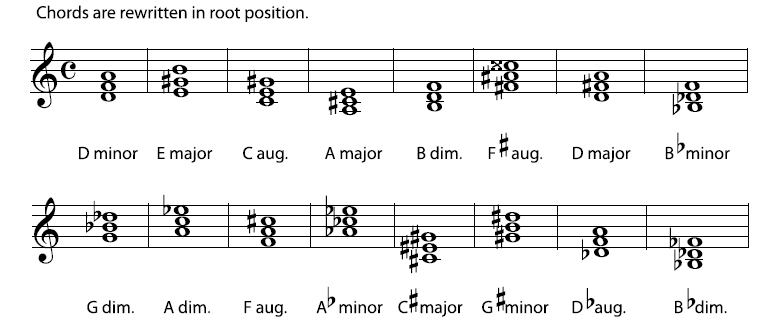
Solution to Exercise 5.8:

Solution to Exercise 5.9:
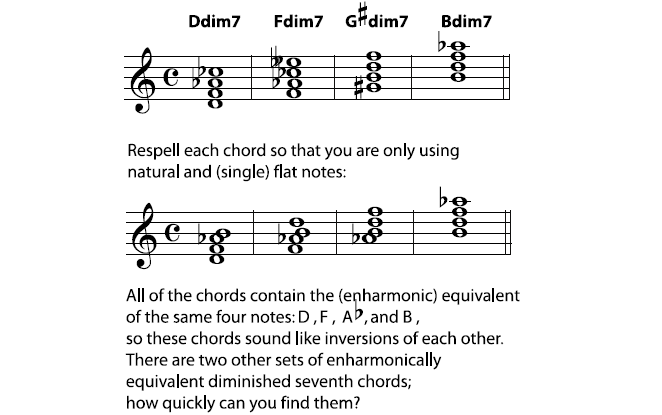
Solution to Exercise 5.10:

Solution to Exercise 5.11:
You can check your work by
- listening to the chords to see if they sound correct
- playing your chords for your teacher or other trained musician
- checking your answers using a chord manual or chord diagrams
Solution to Exercise 5.12:
Notice that a half-diminished seventh (Seventh Chords) can be (and sometimes is) written as it is here, as a minor seventh with flat five.
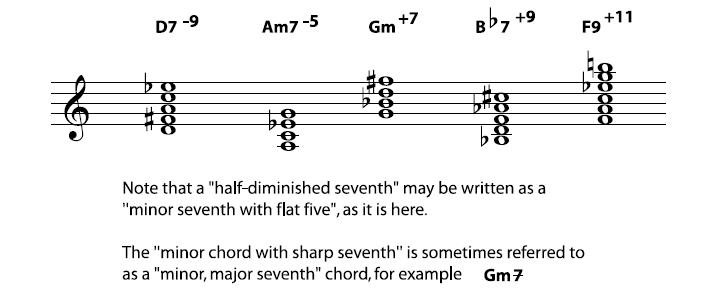
Solution to Exercise 5.13:
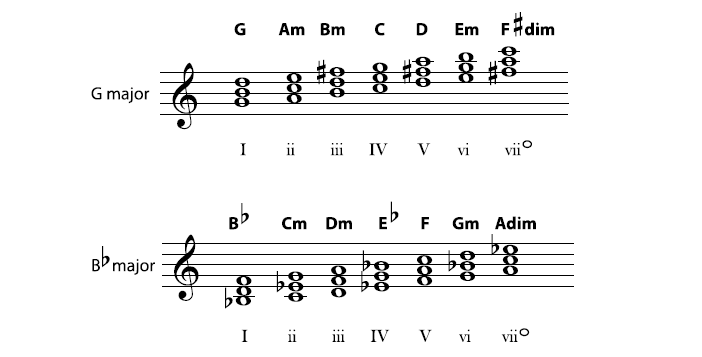
Solution to Exercise 5.14:
- G major (G)
- A major (A)
- G sharp major (G#)
- A minor (Am)
- E minor (Em)
- A minor (Am)
- E seventh (E7)
Solution to Exercise 5.15:
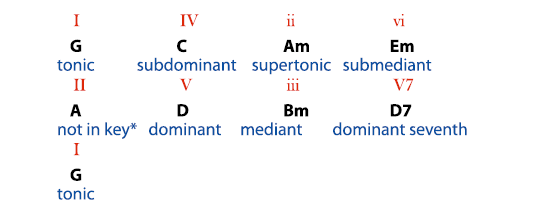
There is no subtonic in this progression.
*It is A minor (with a C natural), not A major (with a C sharp) that belongs in this key. An A major chord can sound good in the key of G major, however. It is the dominant of the dominant (D major), so playing an A major chord can sometimes make the music feel like it has temporarily moved to the (closely related) key of D major. This type of harmonic complexity helps keep a piece of music interesting.
Solution to Exercise 5.16:
The tonic, subdominant, and dominant are minor (i, iv, and v). The mediant, submediant, and subtonic are major (III, VI, and VII). The supertonic (ii) is diminished.
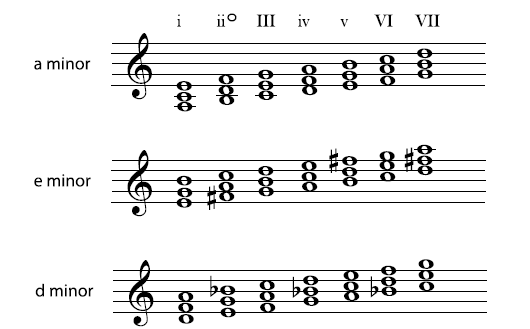
Solution to Exercise 5.17:
The III chord would become augmented; the v chord would become major; and the vii chord would become a diminished sharp seven chord. The major dominant chord would be most useful in establishing the tonal center of the piece, although the diminished sharp seven might also sometimes be used for cadences.
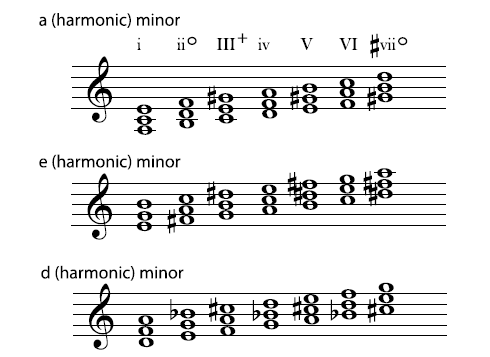
Solution to Exercise 5.18:
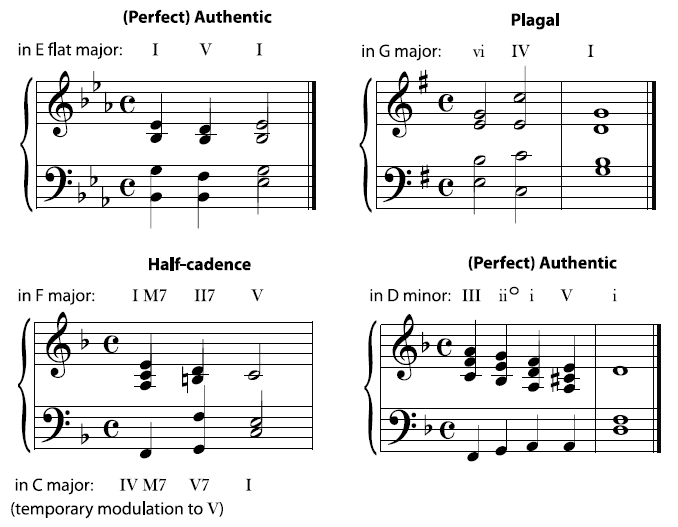
Notice that the half cadence looks like (and in fact is) a modulation to the dominant. In this very common progression, the dominant seventh of the dominant (which requires an accidental) makes the dominant feel like a very strong resting point, and the piece will continue on in the dominant key for a while, before returning to the tonic key. Also notice the accidental required in the minor key to make the (major) dominant chord.
Solution to Exercise 5.19:
Your answers will depend on the songs you choose. Check them with a teacher if you can. (Bring the music so the teacher can listen to it while checking your answers.)
Solution to Exercise 5.20:
If one is available, have a music teacher check your answers.
- 6653 reads






